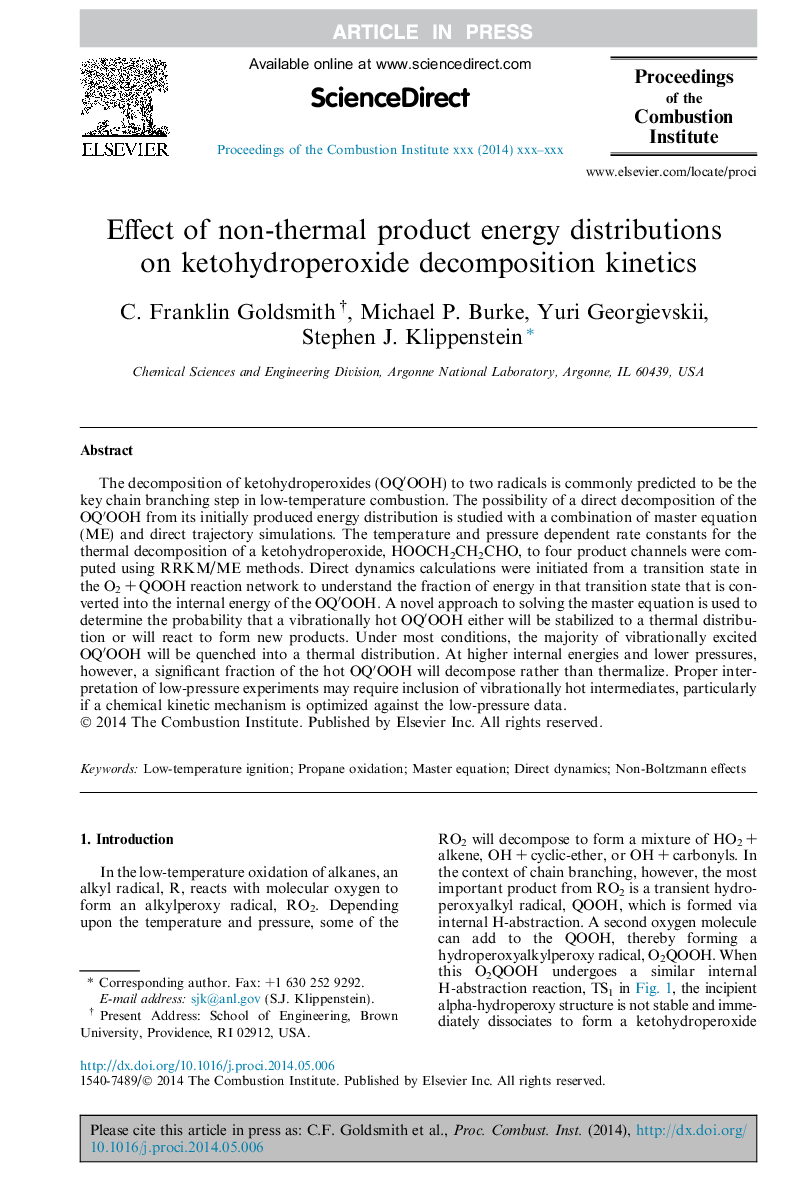| Article ID | Journal | Published Year | Pages | File Type |
|---|---|---|---|---|
| 6679252 | Proceedings of the Combustion Institute | 2015 | 8 Pages |
Abstract
The decomposition of ketohydroperoxides (OQâ²OOH) to two radicals is commonly predicted to be the key chain branching step in low-temperature combustion. The possibility of a direct decomposition of the OQâ²OOH from its initially produced energy distribution is studied with a combination of master equation (ME) and direct trajectory simulations. The temperature and pressure dependent rate constants for the thermal decomposition of a ketohydroperoxide, HOOCH2CH2CHO, to four product channels were computed using RRKM/ME methods. Direct dynamics calculations were initiated from a transition state in the O2Â +Â QOOH reaction network to understand the fraction of energy in that transition state that is converted into the internal energy of the OQâ²OOH. A novel approach to solving the master equation is used to determine the probability that a vibrationally hot OQâ²OOH either will be stabilized to a thermal distribution or will react to form new products. Under most conditions, the majority of vibrationally excited OQâ²OOH will be quenched into a thermal distribution. At higher internal energies and lower pressures, however, a significant fraction of the hot OQâ²OOH will decompose rather than thermalize. Proper interpretation of low-pressure experiments may require inclusion of vibrationally hot intermediates, particularly if a chemical kinetic mechanism is optimized against the low-pressure data.
Related Topics
Physical Sciences and Engineering
Chemical Engineering
Chemical Engineering (General)
Authors
C. Franklin Goldsmith, Michael P. Burke, Yuri Georgievskii, Stephen J. Klippenstein,
